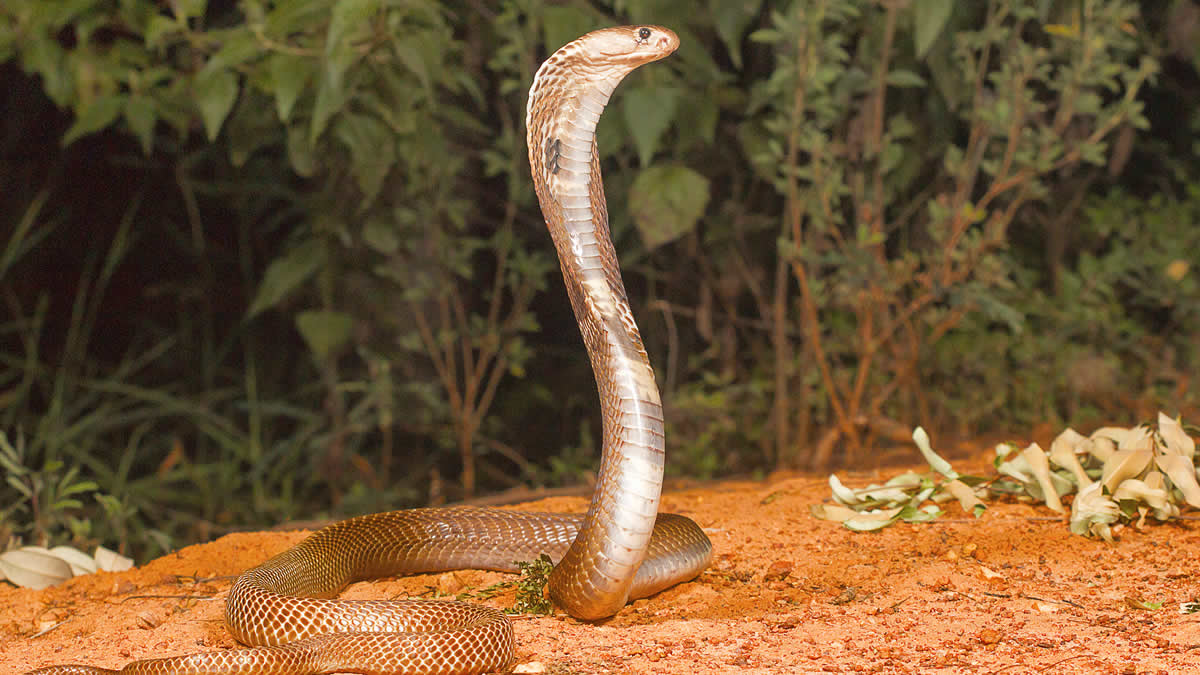About the list
There are a lot of lists on the internet claiming to showcase the top 10 most deadly snakes in the world, or the most venomous snakes, or the most dangerous snakes in any given region. And it’s easy enough to point to any number of venom toxicity studies (almost exclusively done on mice) or to rank snakes according to venom yield to put a list together. Steve Irwin famously used one of the former approaches for his documentary, “The 10 deadliest snakes in the world”. Conveniently, they were all in Australia. A fact that scared the crap out of everyone else on the planet.

But what the Aussies may have known that most of us didn’t, is that many of those snakes live far away from people (the inland taipan, for instance) and that antivenom is readily available to treat the bites of the snakes closer to population centers (the the eastern (or common) brown snake, for instance). In fact, Australia averages only a handful of snake bite deaths per year; we are talking 1-2.
What this list aims to do
The point of this top 10 list is to rank venomous snake species according to how many human deaths they cause in a given year. And full disclosure, a list like this is impossible to get 100% correct. There is wild disagreement and rampant speculation about numbers within even the same country, much less over vast regions like India and Africa where most of the deadly bites take place. And information out there is often contradictory. So this is the best guess based on a number of things. Because we do know a few things.
What we know
Southeast Asia, India in particular, far outpaces the rest of the world in both venomous snake bites and in deaths. And we know that Africa, primarily Sub-saharan Africa, accounts for the next highest total. This is because most of the bites occur in rural and/or very undeveloped areas lacking accessible public health infrastructure. These areas also have among the highest populations of deadly snakes in the world and populations of people who come into frequent contact with them.
In some parts of Africa, many victims go to local shamans or healers instead of seeking help elsewhere due to mistrust of medical authorities. There are a variety of reasons for that, but suffice to say, care for envenomated people historically has a pretty spotty record, at best in some areas.
What is the criteria?
So I’ll be using data from a variety of sources, all of which will be cited, to piece together what are likely the top 10 most deadly snake species in terms of human deaths in the world. I’ll use hard numbers that seem to be agreed upon, but in many cases, the estimated totals will have to be educated guesses as estimates are all over the board even for the same species. So I’m using the low-end estimates for the ranking, but showing the range. This may result in some snakes being ranked lower than they should be. What is certain, is that if a snake makes this list, especially the top 5-6, they have a devastating impact on the people who live with them. And some of the snakes may be surprising to you.
For one, there won’t be any sea snakes on this list because they don’t bite many people, and some very famous species which always seem to make these “most deadly” lists won’t be here either. No king cobra or bushmasters, for instance.
Why is the King Cobra not on the top 10 of the most deadly snakes in the world?
King cobras and bushmasters are both huge snakes with enormous venom yields and extra potent venom. But they don’t kill that many people. Bushmasters are hard to find and rarely come into contact with humans. King cobras have a large range and do come into contact with people but rarely bite. Both have the venom potential to be the most deadly but by virtue of their general demeanor or lack of opportunity, they simply aren’t deadly enough in practice to make the list.
No snakes from Europe or the USA make the top 10 either. The coral snake in the US, a relative of cobras, has potent venom, but barely bites anyone. Rattlesnakes do account for around 8,000 bites a year, but a relatively small number of patients die, only around 15-20.
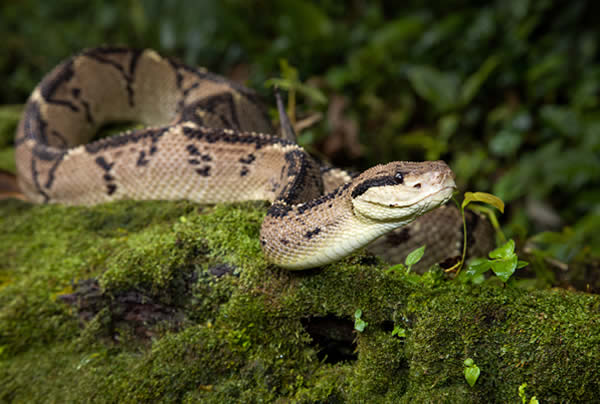
One last thing. Advances in antivenom research have made snake bites in much of the world more or less treatable in most cases. But more must be done to help make this a reality for others. So this list doesn’t aim to objectify people from areas where these deaths occur. Rather, it seeks to highlight the problem to raise awareness.
With that, Let’s get into it.
10. Naja nivea – Cape Cobra
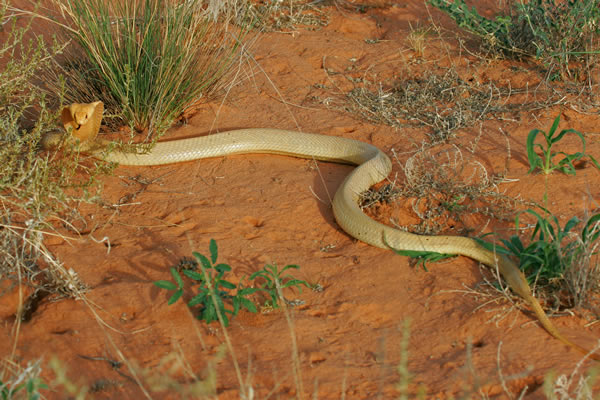
Range: Southern Africa – South Africa, Botswana, Namibia, and Lesotho
Estimated annual human death toll: Around 30
Estimated mortality rate if untreated: 60%
The cape cobra is native to Southern Africa and grows to about 1.4 meters in length (or 4 feet six inches). They are highly variable in coloration with individual specimens appearing yellow, brown, nearly black, or speckled. Naja nivea is one of the most dangerous species to humans in southern Africa because it is active during the day, has extremely potent and fast-acting venom, and can inject a lot of it when it strikes. It’s also very common and frequently found around homes.
While the death statistics are tough to come by, it is certain that the cape cobra is responsible for several dozen deaths a year over its relatively small geographic range. And if not for the better-than-average medical facilities and infrastructure compared to the rest of the continent, the death toll would be much higher.
Envenomation can cause a number of neurological symptoms that can rapidly occur. When a victim dies from the bite, the cause is typically respiratory failure due to muscle paralysis. Treatment, however, is often life-saving, with mechanical ventilation being the most important therapy along with a polyvalent antivenom for the most serious cases. The estimated survival rate with treatment is over 90%.
9. Bungarus candidus – Malayan Krait or Blue Krait
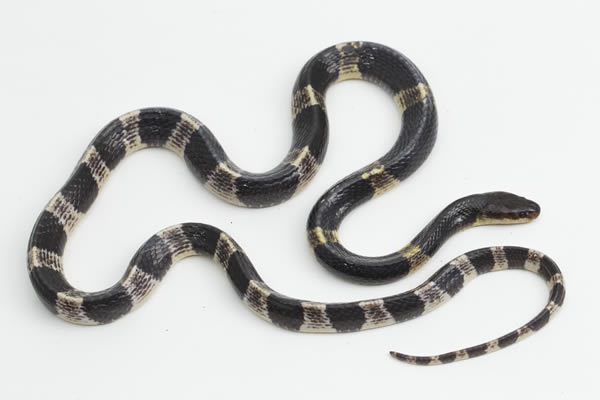
Range: Southeast Asia – Malaysia, Vietnam, Thailand, Bali, Laos, Indonesia, Singapore, and Sumatra.
Estimated annual human death toll: Around 100
Estimated mortality rate if untreated: 60% – 70% (around 50% with treatment)
The Malayan or blue krait inhabits a very large geographical range with high human populations and victims of their bites have a much higher than average mortality rate both when untreated and with treatment, making this one of the most deadly snakes to people in the world. While the Malayan or blue krait is docile during the day, the Bungarus candidus is much more aggressive at night when it’s actively hunting for prey.
Often when people encounter them, they neither see nor feel the attack. The bite is not painful. Many people simply start having symptoms, such as cramping, abdominal pain, diarrhea and generally feeling tired. If these people don’t seek medical help quickly, and many times even if they do, they have a very high chance of dying of respiratory failure due to a presynaptic blocker in the venom that causes paralysis of muscles needed for breathing. Like the cape cobra, the cause of death for Malayan krait bite victims is typically respiratory failure, which occurs in about 50% of cases.
There is little in the way of official numbers for human fatalities, but 100 annual deaths is likely an underestimate.
8. Bothrops asper – Terciopelo or Fer-de-lance or Lancehead
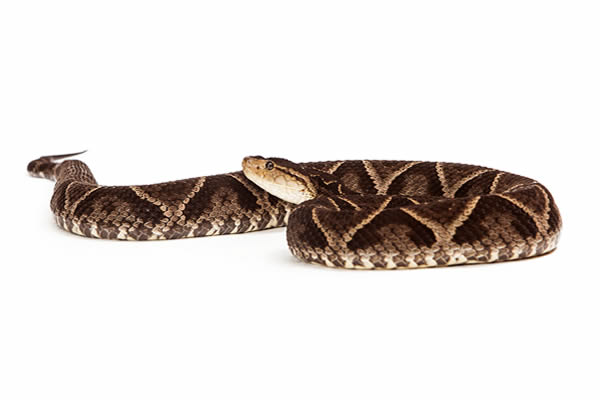
Range: Southern Mexico, Guatemala, Honduras, Belize, Nicaragua, Panama, Costa Rica, Ecuador, Colombia, and Venezuela
Estimated annual human death toll: At least 250, likely more.
Mortality rate if untreated: 7% – 9%
The Bothrops asper is a large, heavy-bodied snake capable of growing to 7 feet in length. It has a famously nasty personality and is very common in its huge range. The death toll is hard to figure, though for a variety of reasons. For one, there are many different related vipers in the Bothrops family and all of them are highly venomous and can be hard to tell apart. The jararaca is one of these, and is responsible for many deaths in its range in Brazil. For another, people in some of these regions don’t seek prompt medical attention, or records are not taken.
Some studies have been done that estimate over 350 deaths in the Americas occur from snakebite every year. It is assumed that most of those are attributed to the Bothrops family. And that most of those are from the Bothrops asper. But while the number isn’t certain, because of the lack of reporting and the large rural populations with little reliable health care, the total is sadly probably an underestimate.
The fer-de-lance has a very strong hemotoxic venom that is lethal and also disfiguring. Symptoms include intense pain at the bite site, swelling, numbness, nausea, vomiting, blistering, bruising, and necrosis. Death can occur from any number of gruesome complications. Amputations are common. There is a newer antivenom that has reduced the treated mortality rate to almost 0%, but because of some of the factors already discussed, not everyone can take advantage of the new advances. Still, there is hope, in the Americas at least, that death rates may fall in the future.
7. Dendroaspis polylepis – Black Mamba
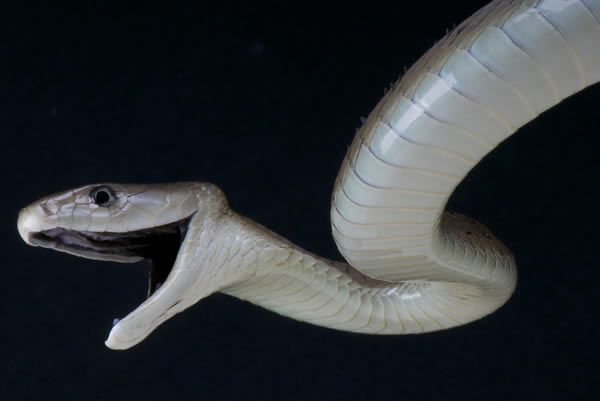
Range: sub-Saharan Africa – Cameroon, Central African Republic, the Democratic Republic of the Congo, South Sudan, Ethiopia, Eritrea, Somalia, Kenya, Uganda, Tanzania, Burundi, Rwanda, Mozambique, Swaziland, Malawi, Zambia, Zimbabwe, Botswana, South Africa, Namibia, and Angola.
Estimated annual human death toll: At least 500, most likely more.
Mortality rate if untreated: 50% (unknown)
Commonly referred to as the most feared snake in Africa, the black mamba is truly a terrifying force of nature. They commonly grow to lengths of 7 feet with some individuals growing to ten feet or more, making the black mamba the longest venomous snake species in Africa. They are slender and quick snakes capable of disappearing into tree canopies or into the brush in an instant. Despite the name, their coloration is typically olive green to dark gray. It’s the inside of the mouth that is jet black. The mamba bears its open mouth as a threat display to scare off would-be threats. It can also flatten out the bones in its neck to hood like a cobra (though the size of the hood is much smaller than that of a cobra).
Most bites occur during mating season when Dendroaspis polylepis is particularly grumpy. One of the factors that contribute to the lethality of black mambas is that they deliver a lot of venom and they have been known to strike repeatedly. Another is that due to their length and ability to lift a large portion of their bodies off the ground, many victims sustain bites to the upper body. Those bites are often more serious than ones to the extremities (ankles and feet).
Mamba Misconceptions
While there is no doubt the black mamba is extremely dangerous, like some other African snakes on this list, there is much misinformation and legend that makes its way onto the internet about them. One such item is the claim that the mortality rate of an untreated bite from a black mamba is 100%. That is demonstrably not true. While the number is unknown, it has been documented many many times over decades that people can and have survived a bite even before any antivenom existed. What is unclear is how often that happens. The mortality rate is very high if untreated, but it’s not 100%
Some people also claim that victims die within minutes of a bite. While that can, and does, happen to some people who are allergic to the venom, it’s not the norm. Most people who do succumb to black mamba bite do so several hours after the encounter. Having said that, in severe cases, people may begin to have trouble breathing within 30 minutes of a bite.
Finally, Finding an accurate death count for these snakes proves impossible as well, as so many of the numbers are way off the charts, claiming even more annual deaths than all snakebites in Africa. Also, the black mamba is commonly credited with ALL the snakebite deaths in Africa. In fact, it’s not even in the top 2, not by a long shot. A conservative estimate would be around 500. Certainly, there are far fewer deaths in South Africa where antivenom is widely available and effective, but the range of the black mamba is enormous and includes many highly populated and medically underserved areas in remote regions.
And despite the many exaggerations about its potency, the black mamba is absolutely an incredibly lethal and dangerous animal.
6. Bitis arietans – Puff Adder
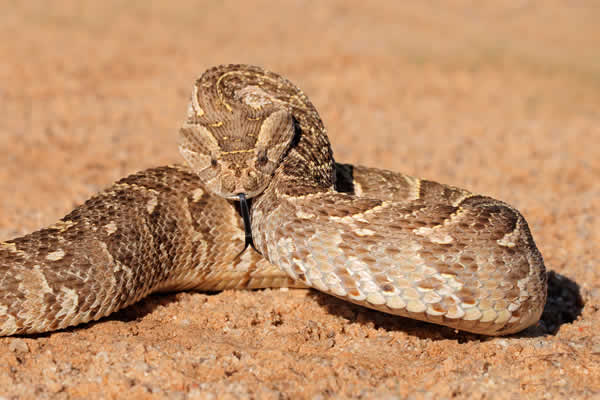
Range: Morocco, Mauritania, Senegal, Mali, southern Algeria, Guinea, Sierra Leone, Côte d’Ivoire, Ghana, Togo, Benin, Niger, Nigeria, Chad, Sudan, Cameroon, the Central African Republic, northern, eastern, and southern Democratic Republic of the Congo, Uganda, Kenya, Somalia, Rwanda, Burundi, Tanzania, Angola, Zambia, Malawi, Mozambique, Zimbabwe, Botswana, Namibia, South Africa, Saudi Arabia, and Yemen
Estimated annual human death toll: At least 2,000
Mortality rate if untreated: 10% – 50%
Puff adders are stout, heavy-bodied snakes that average around 3 feet in length. They are common snakes in their range who frequently bask in areas that put them into contact with people. Their dull coloration provides excellent camouflage and makes accidental contact with humans inevitable.
Remember when I said wildly different stats exist for African snakes? Well, none more so than with the puff adder. Some sources claim 32,000 bite deaths per year in Africa (Which is nonsense) and others cite its relatively low mortality rate and the effectiveness of antivenom to claim the puff adder kills maybe hundreds per year. Based on hard numbers from Kenya and other areas, I split the difference but err on the side of reason.
It’s frequently said that no snake kills more people in Africa than the puff adder. That’s not true. That infamous title is held by another snake on this list. But it’s clear that the Bitis arietans is a formidable snake with a huge range that consists of practically the whole of sub-Saharan Africa plus parts of the Arabian peninsula and Morocco.
Some estimates show a low mortality rate with and without treatment, but the sheer number of encounters make up for the lower lethal potency of venom compared to some others on this list. But what doesn’t kill you doesn’t always make you stronger. The bite from a puff adder is in a word, brutal.
Here is a list of symptoms: severe pain, deep necrosis, compartment syndrome, immovable muscles due to hemorrhage or coagulation, edema, shock, watery blood oozing from the puncture wounds, nausea, vomiting, subcutaneous bruising, blood blisters that may form rapidly, and painful swelling of the regional lymph nodes, hypotension, together with weakness, dizziness, and periods of semi- or unconsciousness. Gangrene and secondary infections. Amputations are common.
5. Bungarus caeruleus – Common Krait
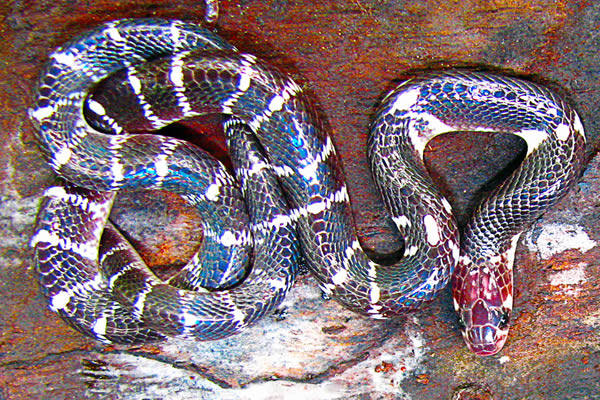
Range: India, Sri Lanka, Bangladesh, and Pakistan
Estimated annual human death toll: Around 10,000
Mortality rate if untreated: 70% – 80%
The common krait is a relatively long and slender snake, commonly around 3 feet, but some individuals far exceed that length. They have small heads and dark bodies with several small white bands down their length.
Much like its close relative, the Malayan or blue krait earlier on our list, the common krait is most dangerous at night when it’s far more active and tends to come into people’s homes in search of mice and other rodents to eat. Many people in rural India sleep on the floor and sometimes they roll over onto the snakes and take a bite. And they sometimes don’t wake up.
The bite isn’t painful so people may not know anything is wrong until they wake up hours later when they are already in distress. And as with the krait before, the mortality rate is astonishingly high. And the death count is likely to be around 10,000 a year. India keeps far better records than most African countries so these numbers are more reliable. India also has far more snakebite deaths than the entire continent of Africa, which may be surprising.
The common krait is the first of this list to be a member of the “Big 4”, which is a term for the 4 snakes that kill the most people in India each year. There are campaigns underway to provide mosquito nets and flashlights to people who live in at-risk areas of the country. If properly used, a mosquito net will deter a krait from gaining access to a sleeping person, and torches, if used at night, would help people identify and avoid kraits and other snakes they might encounter at night.
This species is also responsible for many, many deaths in neighboring countries to India; Sri Lanka, Bangladesh and Pakistan.
4. Echis ocellatus – West African Carpet Viper or West African Saw-Scaled Viper

Range: West Africa in Mali, Ivory Coast, Burkina Faso, Ghana, Togo, Benin, southern Niger, and Nigeria.
Estimated annual human death toll: At least 10,000 (6,500 or more confirmed in Nigeria alone)
Mortality rate if untreated: 10%-20%
The West African carpet viper is a relatively short snake, averaging between a foot and a foot and a half in length. It has large eyes and a short snout. And it, not the puff adder, is the snake that kills the most people in Africa each year. There is reliable data from Nigeria showing over 6,500 people died by snake bites in a single year. And we know this species is the predominant killer in surrounding areas as well.
This little guy isn’t as iconic as the cobra or as infamous as the mighty black mamba. No, but this little snake packs a terrifying punch, is very common in its range, and is among the most aggressive snakes on this list. In fact, it’s not only the most deadly snake in Africa, it’s also responsible for more deaths than all other African snakes combined. Like some of the others on this list, its commonality and close proximity to high populations of people contribute to many encounters. Unlike others, it stands its ground when threatened. When most snakes, even mambas and cobras try to flee, this snake doesn’t budge.
The clinical toxicology website at the University of Adelaide describes the West African carpet vipers as such, “Very nervous, irritable and aggressive disposition, quick to strike ( and repeatedly ) at the slightest provocation and does not try to escape.”
Symptoms of a bite include pain, swelling, bleeding, necrosis, and disfigurement. Amputations are common. Most deaths are due to internal hemorrhages. There is an effective antivenom, but as with the rest of the African species, poor infrastructure and lack of plentiful quality medical facilities make getting treatment difficult or impossible for many victims.
3. Naja naja – Indian Cobra or Spectacled Cobra
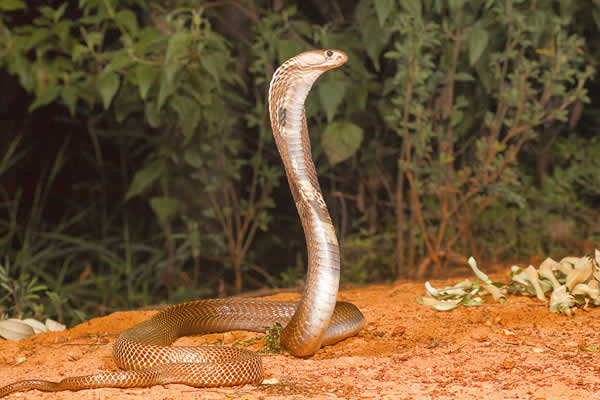
Range: India, Pakistan, Bangladesh, Sri Lanka, Nepal, and Bhutan
Estimated annual human death toll: At least 15,000
Mortality rate if untreated: 20% – 30%
The Indian cobra is a large snake, growing upwards of four and a half feet in India and even longer, up to 7 feet, elsewhere in its range. They feature a pattern, that when hooded and viewed from behind, resembles eyeglasses or spectacles, hence one of the common names. Their coloration is highly variable, ranging from very light to very dark and sometimes speckled in appearance.
They are one of India’s big four as they are abundant and they often hunt in agricultural areas and around the homes of people there due to the large rodent populations the operations attract. The venom of Naja naja is fast acting and can induce cardiac arrest or respiratory failure in as little as 30 minutes. Symptoms include pain, blurred vision, nausea and vomiting, paralysis, and breathing problems. It is critical to get patients to medical help immediately where treatment can drastically increase the odds of survival from a bite, but that is not always possible.
The Indian cobra has been found to often dry bite. It also sometimes strikes with the mouth closed in an effort to scare away potential threats. And its threat display of raising the first third of its body and hooding can alert people to its presence. That distinctive hooding, though also leads to more human interaction, as this is the species most often used by snake charmers and other performers in India. And that increased contact means more bites and sometimes more deaths.
Despite a disposition that would prefer to flee than to fight, the commonality of the Indian cobra over a range where more people live than the entire continent of Africa, potent, fast-acting venom, and frequent interactions with people lead to around 15,000 deaths per year in India alone.
2. Echis carinatus – Indian Saw-scaled viper
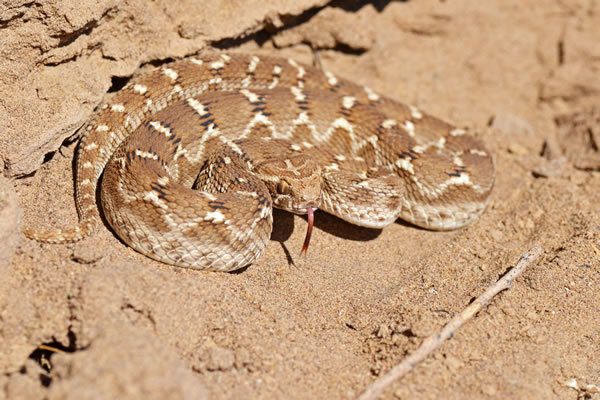
Range: India, Sri Lanka, Bangladesh, Pakistan, Oman, Masirah (Island), eastern United Arab Emirates, Iraq, southwestern Iran, Afghanistan, Uzbekistan, Turkmenistan, and Tajikistan.
Estimated annual human death toll: 10,000 (probably much, much higher)
Mortality rate if untreated: 20%
Like their African cousins, the Indian saw-scaled viper is a small snake, growing no longer than two feet, that blends in well with its surroundings, and that never backs down from a fight. Also, like it Echis family member, it’s responsible for untold numbers of deaths within its vast range. While 10,000 is a solid number in India alone, its range even beyond there is absolutely massive and includes some of the highest population centers in the world.
Sadly, many of the victims of the Indian saw-scaled viper are children. The snake frequently comes into areas where people live and will lay in wait for prey items under bushes, near woodpiles and stone piles, and in and around agricultural areas where children often play. They also are just as comfortable up a tree or in bushes as they are on sand or rocks. If a ball goes into the undergrowth, a child going after it can easilly encounter an Echis carinatus. And unfortunately, these snakes rarely dry bite and the venom is gnarly.
Swelling and intense pain are the first symptoms that occur soon after the bite. If the victim does not receive antivenom, they run a decent risk of not surviving. Like its cousin, the main causes of death from the bite of an Indian saw-scaled involve hemorrhages and related internal damage. In fact, several drugs have been developed using the venom of this species because of their powerful anti-coagulation properties.
1. Daboia russelii – Russell’s viper

Range: India, Sri Lanka, Bangladesh, Nepal, and Pakistan
Estimated annual human death toll: 15,000 – 25,000 in India and thousands more elsewhere.
Mortality rate if untreated: 30%
The Russell’s viper is the deadliest snake in the world for humans. It kills over 25,000 people per year including at least 15,000 people in India alone. They typically have light sandy or brown colored scales with a chain of spots, each outlined in black and white, running the length of their bodies. Regional variations also occur. They are large-body snakes growing up to 6 feet in length that specialize (as adults) in hunting rodents. Unlike Indian cobras which hunt a variety of species, the Daboia russelii is drawn in very large numbers to rural areas, like fields and forested plantations, and also to urban areas where rodent infestations are common. This is due to agricultural practices in the rural areas and very poor sanitation systems in the urban ones. This brings them frequently in contact with huge numbers of people.
Their range in India is much smaller than the other Big Four species, but they are responsible for far and away the most bites and fatalities. They are the most feared snake in practically the whole of their range. This is due to their abundance, their aggressive nature when surprised, and the terrible toll a bite can take.
The venom of the most deadly snake in the world
Russell’s viper venom, in contrast to that of the Echis family, causes the victim’s blood to clot. Initial symptoms of pain and swelling can lead to bleeding from the gums and in the urine. Blood pressure and heart rate can fall and blood clots can form. The venom also can cause necrosis around the bite site. And upwards of 30% of bite victims suffer from kidney failure. Bites are so common that in some localities, Russell’s vipers bites are actually the #1 cause of kidney failure.
Pain can last for weeks and even two weeks after a bite, victims can succumb to kidney failure, respiratory failure, cardiac arrest, or sepsis. With antivenom treatment, chances of survival are increased, but as with the others in India, it is not always possible to find quality care. Even with care, up to a third of survivors will develop hypopituitarism due to the severe damage the venom does to the pituitary glands.
Final Thoughts
Some will object to Russell’s viper being in the #1 position. There is no question it is the single most deadly snake in India. However, the controversy has to do with the saw-scaled subspecies and whether or not to clump their numbers together.
It’s almost certainly true that the saw-scaled vipers (as a group) kill more people than the Russell’s viper. They cover vastly more territory and are certainly accountable for thousands of deaths per year we know about. But when you look at the subspecies as separate, which I do here, the Russell’s viper is clearly responsible for more human deaths than any other snake species in the world.
Sources:
- Bitis arietans
- Bitis arietans
- Bothrops asper
- Bothrops asper
- Bungarus_candidus
- Daboia russelii
- Daboia russelii
- Dendroaspis polylepis
- Dendroaspis polylepis
- Echis_carinatus
- Echis ocellatus
- Naja naja
- Naja nivea
- Naja nivea
- Naja nivea
- Bungarus candidus and Bungarus caeruleus
- Echis Ocellatus and Bitis Arietans
- Bungarus caeruleus, Naja naja, Echis carinatus, and Daboia russelii
- multiple
- multiple
